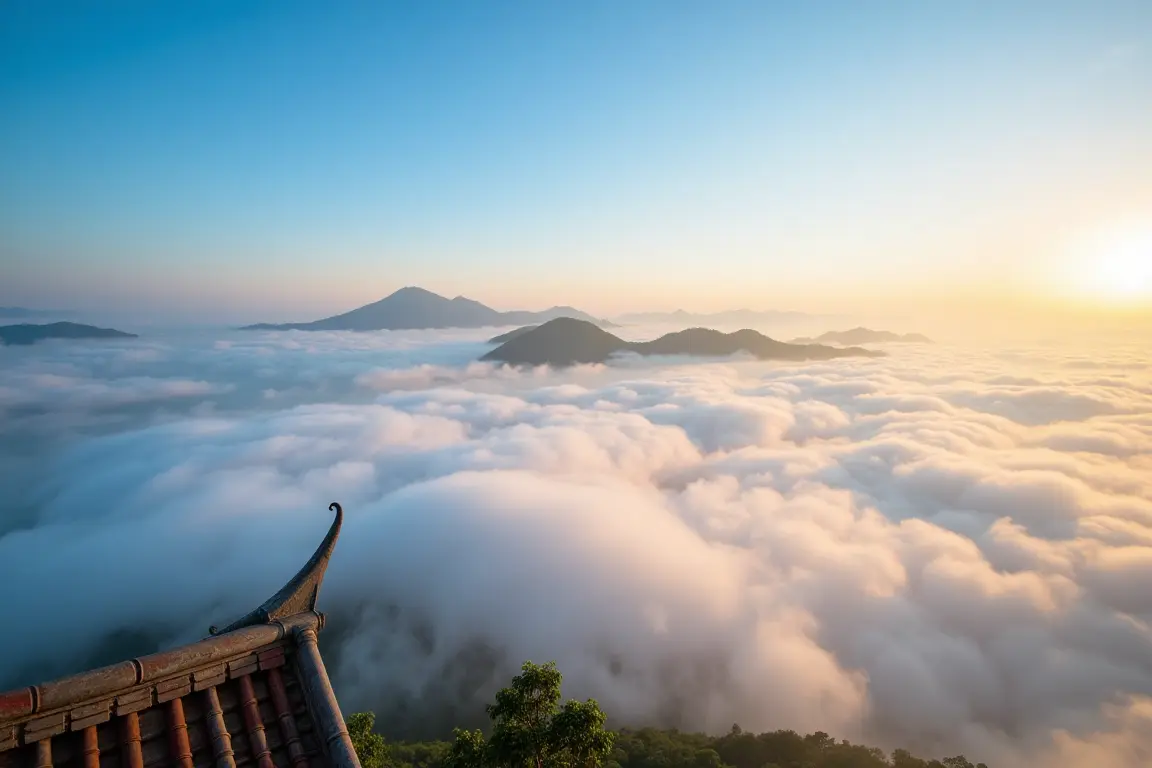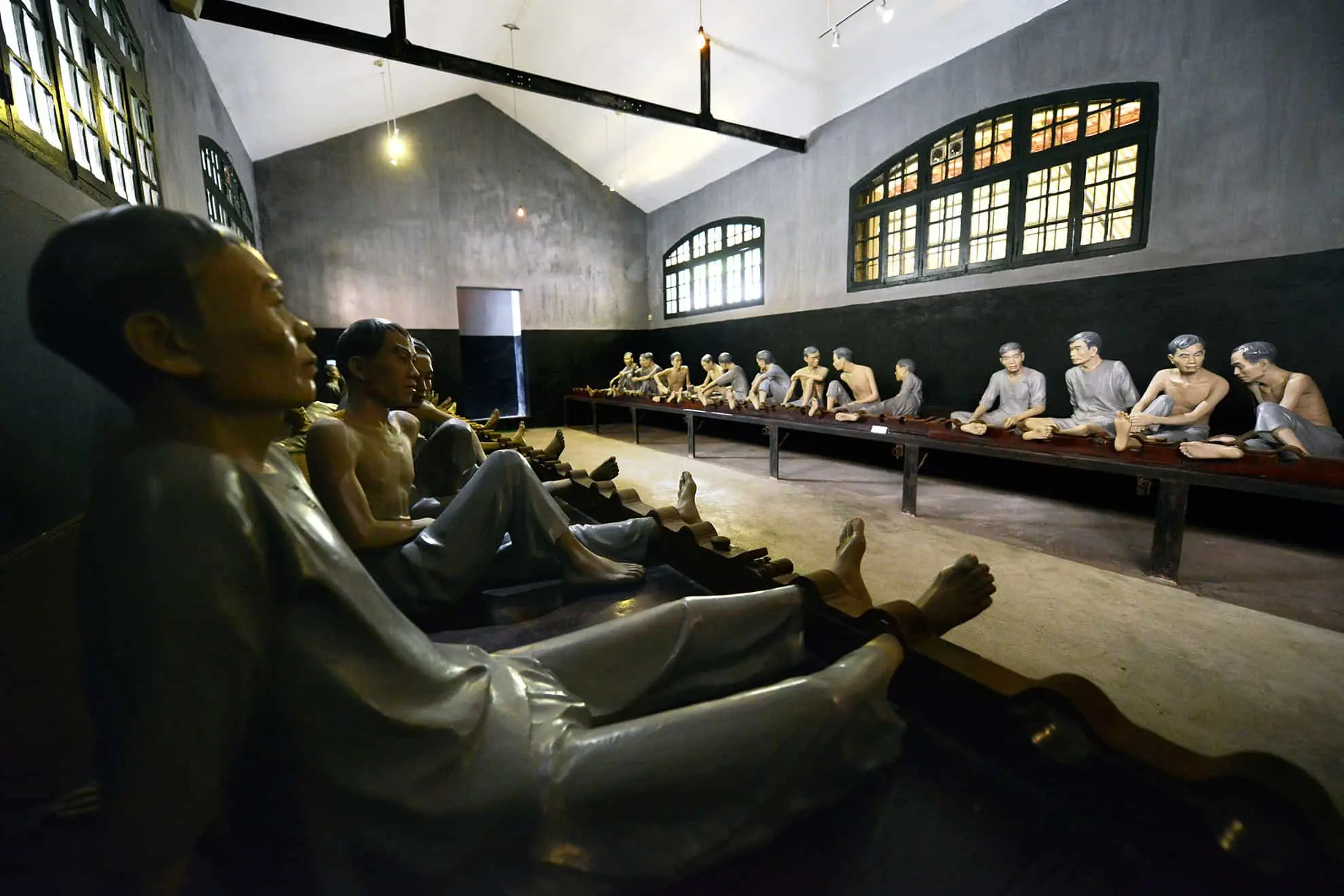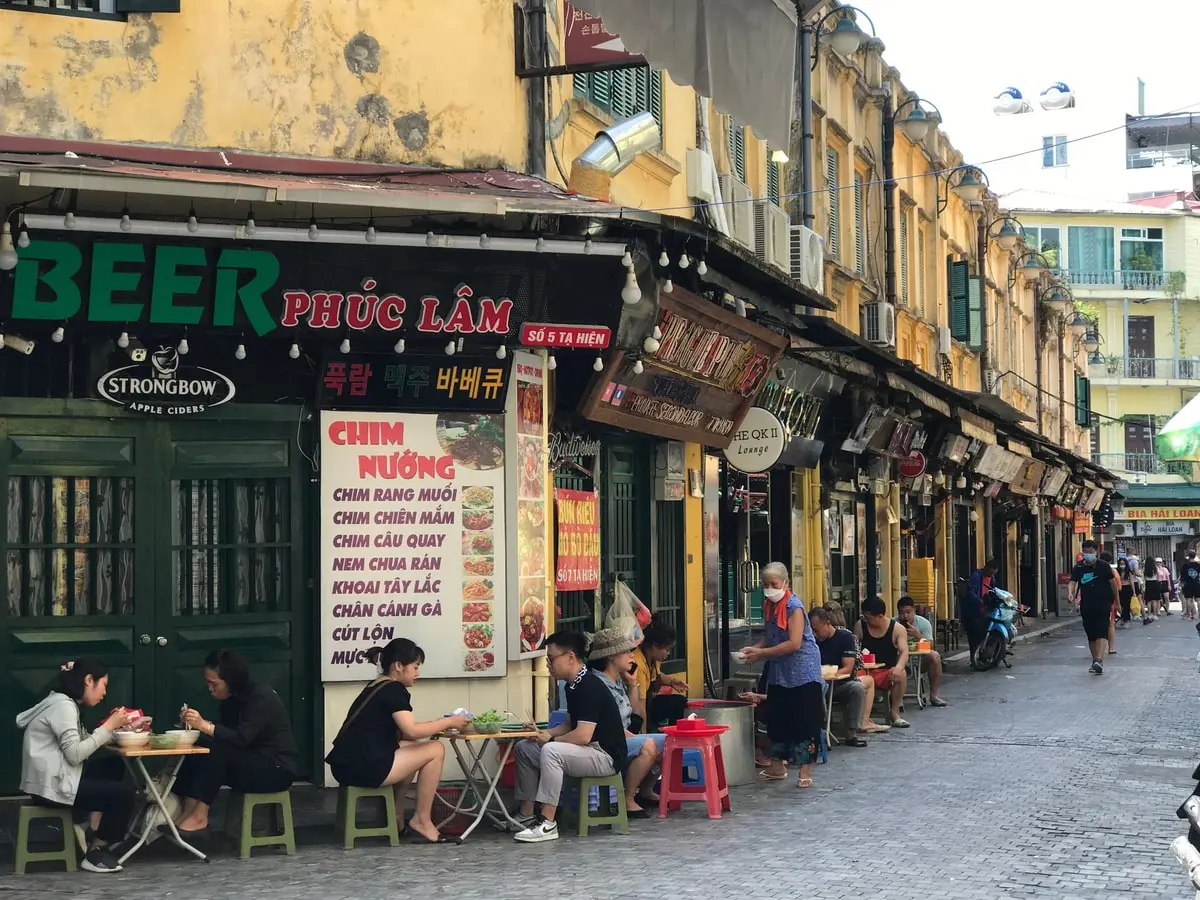Vung Tau Vietnam, a name that evokes images of sun-drenched beaches and coastal breezes, is a prime destination in Southern Vietnam. This city, part of Ba Ria-Vung Tau Province, offers a compelling mix of recreational tourism and economic significance. EssentialVietNamtravel.com provides this guide to help you discover Vung Tau. It is a popular weekend trip spot for residents of Ho Chi Minh City due to its ProximityTo this bustling metropolis. The city itself Is a Coastal City, a characteristic that defines much of its appeal and lifestyle. Many travelers seek information about what to do in Vung Tau, making it a desirable travel spot.
The Country Vietnam boasts many coastal towns, but Vung Tau holds a unique charm. It serves as both a beach destination and an important oil and gas hub for the petroleum industry. Understanding Vung Tau means appreciating its peninsular Topography, its role in Vietnamese coastal tourism, and its place in Southeast Asia as a noteworthy locale. This guide aims to cover the essential aspects, from its famous beaches to its cultural landmarks.
Exploring Vung Tau’s Premier Attractions: Christ of Vung Tau, Vung Tau Lighthouse, and Fun on Back Beach for Your Beach Destination Visit
![]()
Vung Tau offers visitors a variety of attractions. The city is a well-known beach destination. Its most famous landmarks draw crowds year-round. The Christ of Vung Tau statue stands tall, watching over the city. The Vung Tau Lighthouse offers panoramic views. Back Beach provides ample space for recreation and Swimming. These sites are central to the Vung Tau tourism experience. Understanding these main attractions is key to planning your visit. Many people come to Vung Tau specifically to see these iconic spots. They represent the city’s blend of cultural, historical, and natural appeal.
Front Beach also offers a different, calmer atmosphere, known for sunset viewing. Ho May Park provides family entertainment. These locations contribute to Vung Tau’s status as a premier coastal resort in Vietnam. A trip to Vung Tau is incomplete without experiencing these highlights. We at EssentialVietNamtravel.com believe these are the starting points for any Vung Tau itinerary, especially for those seeking things to do in Vung Tau Vietnam. The accessibility of these attractions makes Vung Tau a convenient and enjoyable place for a short getaway or a longer stay. The city is more than just its oil industry; it is a vibrant place for travelers.
The Majestic Christ of Vung Tau: Views and Significance
The Christ of Vung Tau is a MainAttraction of the city. This large statue stands on Nho Mountain (Small Mountain). It is one of the largest statues of Jesus in Asia. The Material used for its construction is Concrete. Visitors can climb the stairs inside the statue. The climb involves over 800 steps to reach the shoulders of the statue. From this vantage point, you receive panoramic views of the Vung Tau peninsula and the South China Sea. The experience offers a unique perspective of this coastal city.
To visit the Christ of Vung Tau:
- Arrive at the base of Nho Mountain. You can take a taxi or motorbike.
- Begin the ascent up the hill to the statue’s base. This path itself has many steps and offers views.
- At the statue, you may need to leave your shoes and bags before climbing inside. There are usually attendants.
- Climb the internal spiral staircase. It can be narrow, so proceed with care.
- Emerge onto the statue’s shoulders. Take your time to enjoy the vista. Remember photography etiquette.
- Descend carefully.
The statue is not just a tourist spot. It is also a significant religious symbol for the local Christian community. Its presence adds to the diverse cultural heritage of Vung Tau. The area around the statue is well-maintained. There are places to rest. The journey to the top is part of the experience. This iconic Christ statue with panoramic views is a must-see. EssentialVietNamtravel.com recommends allocating a few hours for this visit. Consider the Vung Tau weather forecast December or any other month, as it can be hot; bring water.
Historic Vung Tau Lighthouse: A Beacon Through Time
The Vung Tau Lighthouse holds historical importance. It is one of the oldest lighthouses in Southeast Asia. The French built the original structure in 1862. It was later rebuilt in 1913. The lighthouse sits atop Nho Mountain (Small Mountain), not far from the Christ of Vung Tau. Its EstablishedYear of 1862 marks a long history of guiding ships. This historic French-built lighthouse is a testament to Vung Tau’s strategic cape location.
To visit the Vung Tau Lighthouse:
- Travel to Nho Mountain. The road up to the lighthouse is paved but can be steep. Motorbikes or taxis are common transport.
- Walk the final stretch to the lighthouse complex.
- Explore the grounds. You can often climb to the base of the tower for good views. Access inside the tower itself may vary.
- Enjoy the panoramic views of the city, the coastline, and the sea. It offers a different angle compared to the Christ statue.
- There are usually small cafes or vendors nearby where you can get refreshments.
The lighthouse is not just functional. It is a picturesque landmark. Its white cylindrical tower is a familiar sight. The surrounding area is pleasant for a stroll. It offers a peaceful retreat with stunning scenery. EssentialVietNamtravel.com suggests visiting in the late afternoon for softer light and cooler temperatures. The Vung Tau Lighthouse is more than just a navigational aid; it’s a piece of Vung Tau’s history and a key part of the recreational tourism landscape, offering fantastic photo opportunities. Its role as a major offshore oil service port nearby highlights Vung Tau’s dual identity.
Back Beach (Bai Sau): Sun, Sand, and Activities
Back Beach, or Bai Sau, is the most popular and expansive beach in Vung Tau. It stretches for several kilometers along the eastern side of the peninsula. This beach is known for its relatively gentle waves and wide sandy shore, making it suitable for Swimming and various beach activities. Back Beach part of Vung Tau is a primary draw for tourists.
Things to do at Back Beach:
- Find a spot on the sand. You can rent beach chairs and umbrellas from local vendors.
- Enjoy swimming. The water is generally clean, but always be mindful of currents and any local advisories.
- Participate in beach sports. Kite flying is popular. Sometimes you can find jet ski rentals or parasailing.
- Walk or jog along the long stretch of sand, especially in the early morning or late afternoon.
- Enjoy fresh seafood from a Vung Tau hotels near Back Beach with pool or nearby restaurants that line the Thuy Van street parallel to the beach.
- Watch the sunrise if you are an early riser.
Back Beach is a hub of activity, particularly on weekends when many people from Ho Chi Minh City visit. The beach has a lively atmosphere. There are numerous hotels, guesthouses, and resorts situated along or near Back Beach, catering to different budgets. EssentialVietNamtravel.com advises visitors to be aware of their belongings and to stay hydrated, especially during sunny days. The accessibility and the range of activities make Back Beach a central part of any Vung Tau beach Vietnam experience. It is a key element of Vung Tau’s touristic appeal. The peninsula with distinct Front and Back beaches offers varied coastal experiences.
Front Beach (Bai Truoc): Serene Sunsets and City Views
Front Beach, or Bai Truoc, is located on the western side of the Vung Tau peninsula. Unlike the more bustling Back Beach, Front Beach offers a calmer, more picturesque setting. It is KnownFor its beautiful sunset viewing opportunities. The beach itself is smaller and the bay is often filled with fishing boats, adding to its scenic charm.
Activities and experiences at Front Beach:
- Stroll along the promenade. Quang Trung Park runs alongside Front Beach, providing a pleasant green space.
- Watch the sunset. This is the prime activity here, as the sun dips below the horizon over the sea.
- Observe local life. You will see local residents exercising, fishing, or relaxing.
- Dine at waterfront cafes or restaurants. Many establishments offer views of the bay.
- Visit nearby attractions like the White Palace (Bach Dinh), which overlooks Front Beach.
Front Beach has a more relaxed atmosphere. It is a good place for an evening walk or to simply sit and enjoy the view. While swimming is less common here compared to Back Beach, the bay’s beauty is undeniable. The area around Front Beach also has several colonial-era buildings, reflecting Vung Tau’s HistoricName, Cap Saint-Jacques. EssentialVietNamtravel.com recommends Front Beach for those seeking a quieter coastal experience and for photography enthusiasts. It provides a different perspective on vung tau in vietnam, showcasing its gentle side and its connection to the daily lives of its people. The local lifestyle is very apparent here.
Other Noteworthy Tourism Spots and Hidden Gems
Beyond the main highlights, Vung Tau Vietnam offers other interesting places for visitors. These spots contribute to the diverse experiences available in this coastal resort. Ho May Park, for instance, Contains an Amusement Park and offers cable car rides with stunning views. It’s a popular choice for families. The White Palace, built during the Colonial Era, is a historical mansion with beautiful architecture and period artifacts, overlooking Front Beach. It showcases French colonial architecture Vietnam.
Niet Ban Tinh Xa Pagoda is another significant site. This Buddhist temple Houses a large Reclining Buddha statue and features intricate carvings and a peaceful atmosphere. It reflects the Buddhist culture Vietnam prevalent in the region. For those interested in the Vietnam oil and gas sector, while direct tours are uncommon, the omnipresence of the Petroleum industry infrastructure offshore is a unique aspect of Vung Tau’s landscape, especially visible from high vantage points.
Consider exploring Long Hai beach, a nearby coastal area, or taking a trip to Ba Ria City, the capital of Ba Ria-Vung Tau Province, for a broader understanding of the region. Even a walk through some of the less-traveled streets can reveal charming local markets and daily life. EssentialVietNamtravel.com encourages travelers to look beyond the obvious. Finding these less-promoted spots can enrich your Vietnam travel guide experience of Vung Tau. The Peninsular geography means there are many coves and smaller beaches to discover if you are adventurous.
A Taste of Vung Tau: Your Guide to the City’s Best Seafood and Local Cuisine
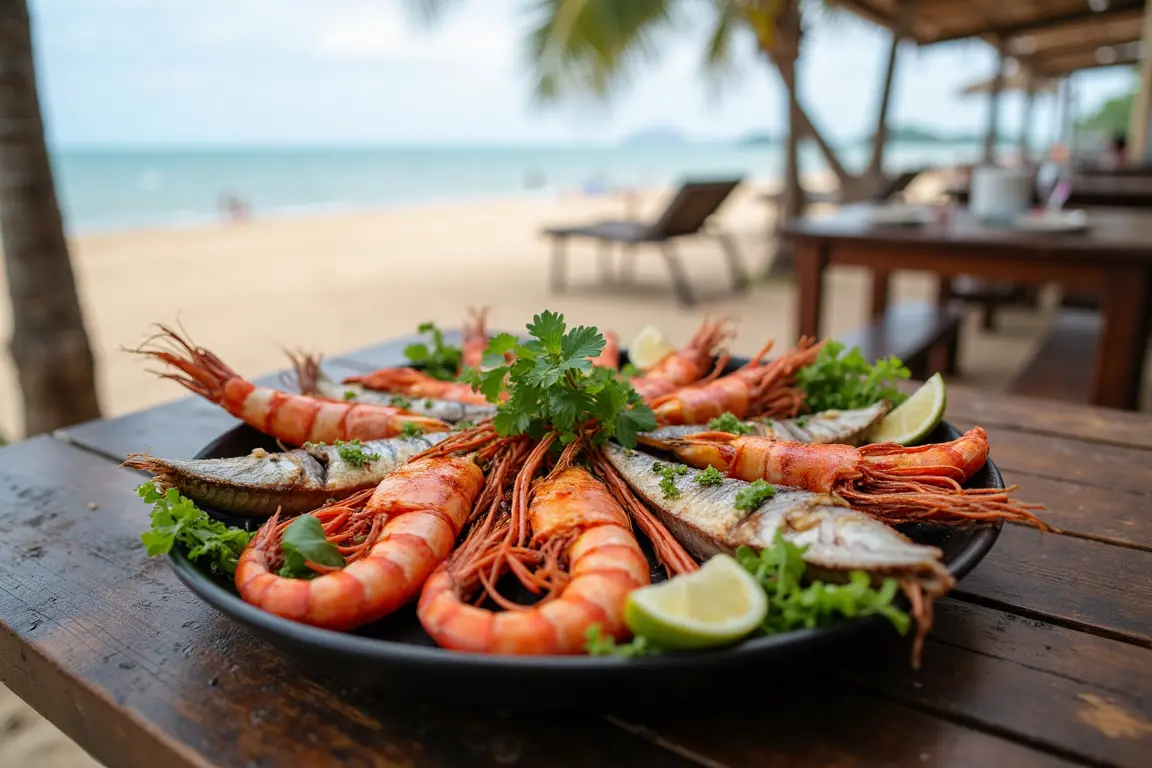
Vung Tau is renowned for its fresh seafood. Its coastal location ensures a daily supply of diverse marine products. A visit to this resort town is incomplete without indulging in its SpecialityCuisine, which is predominantly seafood. The culinary scene in Vung Tau caters to various tastes, from street food stalls to upscale restaurants. Exploring the local food is a key part of experiencing Vung Tau. Seafood is not just food here; it is a part of the local culture and economy. The quality and freshness are what make Vung Tau’s seafood stand out.
EssentialVietNamtravel.com has compiled some tips to help you navigate the best seafood restaurants in Vung Tau city and discover other local delights. Remember that Tourism Drives Service sector growth in Vung Tau, and this is very evident in its dining options. Whether you are looking for a quick bite or a lavish meal, Vung Tau’s food scene will not disappoint. The city’s offerings go beyond just the beaches; its culinary offerings are a major draw.
Must-Try Seafood Dishes in Vung Tau
When in Vung Tau, certain seafood dishes are essential. Grilled squid is a popular choice. The squid is often marinated in chili and spices before being grilled to perfection. Steamed clams with lemongrass offer a fragrant and flavorful experience. The natural sweetness of the clams combined with the aroma of lemongrass is delightful. Another favorite is grilled oysters with scallion oil and peanuts. These are often large, fresh oysters, rich and savory.
Crab is also a Vung Tau specialty. You can have it steamed, roasted with tamarind, or in a hot pot. Look for flower crabs or blue crabs, which are commonly available. Various types of fish, such as grouper or red snapper, can be enjoyed steamed with soy sauce and ginger, grilled, or made into a sour soup. Prawns, whether grilled, steamed, or stir-fried with garlic, are always a treat. Banh khot, a small, crispy savory pancake often topped with shrimp, is a Vung Tau specialty that, while not exclusively seafood, frequently features it and is a must-try local dish.
EssentialVietNamtravel.com suggests asking for local recommendations when you arrive, as seasonal availability can influence the best choices. Don’t be afraid to try something new.
Recommended Seafood Restaurants and Local Eateries
Vung Tau has numerous seafood restaurants. Ganh Hao is a well-known name, with multiple locations offering a vast menu and seaside views. It’s popular with both tourists and locals. For a more local experience, explore the night market or smaller eateries along Hoang Hoa Tham street or near the fishing port. These places often have live seafood tanks where you can pick your meal. Lan Rung Resort also has a respected restaurant with good seafood.
When choosing a restaurant:
- Look for places with high turnover. This usually indicates fresh seafood.
- Check if they have live seafood tanks. This allows you to see the freshness.
- Observe if many locals are eating there. This is often a good sign.
- Ask for prices before ordering, especially for live seafood which is often sold by weight. This avoids surprises. EssentialVietNamtravel.com advises clarifying how it will be cooked.
- Consider areas like Sao Mai – Ben Dinh, which has a concentration of seafood establishments.
Beyond dedicated seafood restaurants, many local Vietnamese eateries will also offer some fresh seafood dishes of the day. Don’t overlook street food stalls, especially for items like grilled scallops or snails. Exploring these options can lead to some of the best seafood restaurants in Vung Tau city and authentic culinary discoveries. Remember, Vung Tau is a city where seafood is central to its identity.
Beyond Seafood: Other Vung Tau Culinary Specialties
While seafood reigns supreme, Vung Tau offers other culinary delights. Banh khot, as mentioned, is a definitive Vung Tau dish. These small, crispy pancakes are made from rice flour and coconut milk, cooked in special terracotta molds, and typically topped with shrimp and scallion oil. They are served with fresh herbs and a sweet and sour fish sauce dip. Finding a good banh khot stall is a rewarding experience.
Stingray hot pot is another local specialty worth trying. The stingray meat is tender and cooked in a flavorful, often tangy and spicy, broth with vegetables and herbs. This dish is particularly popular on cooler evenings.
You can also find various Vietnamese noodle soups like pho or hu tieu, though they may not be as uniquely Vung Tau as banh khot or stingray hot pot. Fresh tropical fruits are abundant. Look for fruit smoothie stalls for a refreshing treat. Bakeries in Vung Tau also offer French-influenced pastries and fresh bread, a nod to its Colonial Era past and historic name Cap Saint-Jacques. EssentialVietNamtravel.com encourages visitors to explore local markets like Xom Luoi Market for fresh produce and local snacks, providing insight into the natural geography and local lifestyle.
Planning Your Vung Tau Weekend Trip: Easy Travel from Ho Chi Minh City to this Coastal Resort
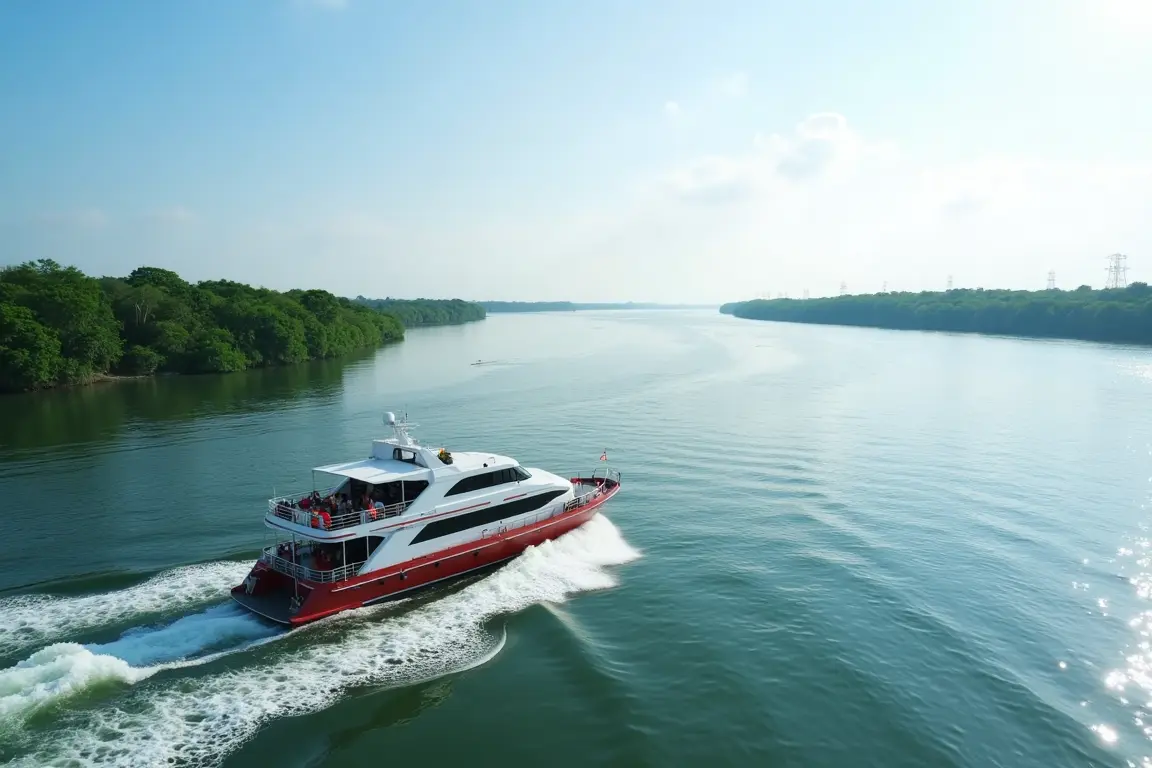
Vung Tau is a favored weekend trip destination, especially for those residing in or visiting Ho Chi Minh City. Its relative proximity and good transport links make it an accessible coastal resort. Planning a trip involves considering how to get from Ho Chi Minh City to Vung Tau by bus or other means, what to include in your things to do in Vung Tau for 3 days itinerary, and the best time to visit. A well-planned trip ensures you can maximize your enjoyment of the beaches, attractions, and seafood that Vung Tau offers.
EssentialVietNamtravel.com provides this section to help you organize your journey. The hydrofoil commuter route is a popular and fast option. Vung Tau’s status as a primary weekend beach escape for HCMC residents means it can get busy, so some advance planning is beneficial. Information about Vung Tau is sought by travelers frequently for these short escapes.
Start Planning Your Trip to Vietnam!
Before you get to Vung Tau, you need to get to Vietnam. Use these powerful search tools to find the best deals on flights and transportation for your journey.
Getting to Vung Tau from Ho Chi Minh City: Options and Tips
Traveling from Ho Chi Minh City (HCMC) to Vung Tau is straightforward, with several options available. The Ho Chi Minh City transfer to Vung Tau typically takes between 2 to 3 hours depending on the mode of transport and traffic.
By Ferry/Hydrofoil
The ferry or hydrofoil is a popular and scenic option. It offers a direct TransportLink between downtown HCMC and Vung Tau.
- Identify ferry operators. Greenlines DP and Petro Express are common choices.
- Check schedules and book tickets. You can usually book online through their websites or via travel agents. Booking in advance is recommended, especially for weekends or holidays. EssentialVietNamtravel.com advises this for a smooth journey.
- Departure point in HCMC is typically Bach Dang Wharf in District 1.
- Arrival point in Vung Tau is Cau Da Port, conveniently located near Front Beach.
- The journey takes about 1.5 to 2 hours. It is generally comfortable and offers views of the Saigon River and the coastline. This is a major offshore oil service port, and you might see related activities.
By Bus or Private Car
Traveling by road is another common method.
- By Bus: Several bus companies operate routes from HCMC to Vung Tau. Phuong Trang (FUTA Bus Lines) and Hoa Mai are reputable options.
- Buses depart from Mien Dong Bus Station in HCMC or other designated pick-up points.
- Tickets can be bought at the station or online.
- The journey takes approximately 2.5 to 3 hours, depending on traffic. Buses are generally comfortable and air-conditioned.
- By Private Car or Motorbike: Renting a private car with a driver offers more flexibility. Riding a motorbike is an option for experienced riders, offering an adventurous journey.
- The route primarily follows National Highway 51.
- Be aware of traffic conditions, especially when leaving or entering HCMC. EssentialVietNamtravel.com suggests avoiding peak hours if possible.
- This option allows for stops along the way if desired. Long Hai beach or Ba Ria town could be brief detours.
Crafting Your Vung Tau Weekend Trip Itinerary
A typical Vung Tau weekend trip can be packed with activities or be more relaxed, depending on your preferences. Here is a sample structure for a things to do in Vung Tau for 3 days itinerary, which can be adapted for a shorter weekend:
Day 1: Arrival and Coastal Exploration
- Arrive in Vung Tau (e.g., via hydrofoil). Check into your Vung Tau hotels near Back Beach with pool or other chosen accommodation.
- Lunch: Sample local cuisine, perhaps some fresh seafood.
- Afternoon: Head to Back Beach for swimming, sunbathing, or beach activities. Enjoy the vibrant atmosphere.
- Late Afternoon: Visit the Vung Tau Lighthouse for sunset views over the city and coastline.
- Evening: Dinner at one of the best seafood restaurants in Vung Tau city. Explore the night market if available.
Day 2: Cultural Sights and Panoramic Views
- Morning: Visit the Christ of Vung Tau. Climb the statue for breathtaking panoramic views.
- Late Morning: Explore Niet Ban Tinh Xa Pagoda or the White Palace for a dose of cultural heritage and French colonial architecture Vietnam.
- Lunch: Try Banh Khot, a Vung Tau specialty.
- Afternoon: Visit Ho May Park for family fun, cable car rides, and more views. Alternatively, relax at Front Beach.
- Evening: Enjoy sunset at Front Beach, followed by dinner at a waterfront restaurant.
Day 3: Relaxation and Departure
- Morning: Enjoy a leisurely breakfast. Perhaps some last-minute souvenir shopping or a final swim.
- Consider visiting a local market like Xom Luoi Market to experience the local lifestyle.
- Lunch: One last seafood meal or local dish.
- Afternoon: Depart from Vung Tau back to Ho Chi Minh City.
EssentialVietNamtravel.com advises flexibility. This itinerary covers major highlights, but you can tailor it. Vung Tau is a desirable travel spot because it offers this blend of activity and relaxation.
Best Time to Visit Vung Tau for a Coastal Resort Experience
Vung Tau has a tropical savanna climate, characterized by wet and dry seasons. The best time to visit Vung Tau for ideal beach weather is generally during the dry season, which runs from December to April. During these months, you can expect more sunshine and less rain, making it perfect for enjoying the beaches and outdoor attractions. The Vung Tau weather forecast December is often very pleasant.
Key considerations for timing your visit:
- Dry Season (December – April): This is peak tourist season. Weather is generally sunny and warm. Sea conditions are usually calm. EssentialVietNamtravel.com recommends booking accommodation and transport in advance, especially if traveling during holidays like Tet (Vietnamese New Year) or public holidays.
- Rainy Season (May – November): Expect afternoon showers, which are usually short but can be heavy. The crowds are generally smaller, and you might find better deals on accommodation. The rain can offer a respite from the heat. September and October tend to be the wettest months.
- Weekends vs. Weekdays: Vung Tau is significantly busier on weekends due to its popularity as a weekend trip destination for HCMC residents. If you prefer a quieter experience, consider visiting on weekdays. Prices for accommodation may also be lower during the week.
Ultimately, Vung Tau can be visited year-round. Even during the rainy season, mornings are often sunny. Its coastal location ensures a breeze, making it feel cooler than inland areas like Bien Hoa city or Can Gio district in some respects.
Where to Stay in Vung Tau: Top Accommodation Choices near Front Beach, Back Beach, and Ho May Park

Vung Tau offers a wide range of accommodation options to suit various budgets and preferences. From luxury resorts to budget-friendly guesthouses, you can find a place that meets your needs. The main areas for tourists to stay are around Back Beach, Front Beach, and near Ho May Park. Choosing the right location depends on what you prioritize for your Vung Tau beach Vietnam experience. EssentialVietNamtravel.com highlights some popular areas and types of lodging.
Many travelers look for Vung Tau hotels near Back Beach with pool for easy access to swimming and relaxation. As Tourism Drives service sector growth in Vung Tau, the hospitality sector is well-developed. The city Is a Coastal City, and many accommodations take advantage of this with sea views.
Hotels and Resorts by Back Beach: For Beach Lovers
Back Beach (Bai Sau) is the most popular choice for accommodation due to its long sandy stretch and vibrant atmosphere. Staying here means you are steps away from swimming, sunbathing, and various beach activities. The area is lined with numerous hotels, resorts, and guesthouses.
Types of accommodation at Back Beach:
- Resorts: Several resorts offer extensive facilities, including private beach areas, large swimming pools, restaurants, and spas. Examples include The Imperial Hotel Vung Tau and Pullman Vung Tau. These are ideal for a luxurious stay.
- Mid-Range Hotels: Many comfortable mid-range hotels provide good amenities, often including a pool and breakfast. They offer a balance of comfort and value. Look along Thuy Van street.
- Budget Guesthouses and Homestays: For travelers on a tighter budget, numerous guesthouses and homestays offer basic but clean rooms. These are often located on streets just off the main beach road. EssentialVietNamtravel.com recommends booking in advance, especially for Vung Tau hotels near Back Beach with pool, if you are traveling during peak season or on weekends. The convenience of being close to the main beach is a significant draw for many visitors seeking recreational tourism. Back Beach part of Vung Tau is the heart of its beach life.
Accommodation Options around Front Beach and the City Center
Front Beach (Bai Truoc) and the surrounding city center offer a different atmosphere. This area is generally quieter than Back Beach and provides beautiful sunset views. It’s also closer to some historical attractions like the White Palace and has a good selection of cafes and restaurants.
Why choose Front Beach or city center:
- Scenic Views: Many hotels offer rooms with views of Front Beach bay and its fishing boats.
- Proximity to Amenities: Being in the city center means easy access to markets, shops, and local eateries.
- Quieter Environment: Generally more relaxed than the bustling Back Beach area.
- Historical Charm: The area has some colonial-era architecture. Accommodation here ranges from boutique hotels to standard guesthouses. Petro House Hotel and Grand Hotel Vung Tau are older, established hotels in this vicinity. EssentialVietNamtravel.com suggests this area for those who prefer a mix of coastal scenery and urban convenience. It’s a good base for exploring Vung Tau’s HistoricName as Cap Saint-Jacques. You can still easily access Back Beach via a short taxi or motorbike ride.
Staying Near Ho May Park: Family Fun and Panoramic Views
Ho May Park is a large amusement park and eco-tourism area located on Nui Lon. Staying near the base of the cable car that leads to Ho May Park can be a good option, especially for families or those looking for entertainment combined with great views.
Benefits of staying near Ho May Park:
- Easy Access to Entertainment: Ho May Park Contains an Amusement Park, water park, zoo, temples, and more.
- Panoramic Views: The cable car ride itself and the park offer stunning views of Vung Tau.
- Quieter Area: The immediate vicinity of the cable car station might be less crowded than the main beach areas at night. There are several hotels and guesthouses in this part of Vung Tau. Some might offer packages that include park tickets. EssentialVietNamtravel.com notes that while this area is good for accessing Ho May Park, you will need transport to reach the main beaches like Back Beach or Front Beach. However, for a Vung Tau 3 days itinerary focused on varied activities, it can be a strategic choice. The Christ Statue is on the other mountain, so plan your sightseeing accordingly.
Vung Tau’s Unique Identity: Beyond Tourism – The Christ Statue’s Views and its Role as an Oil Hub
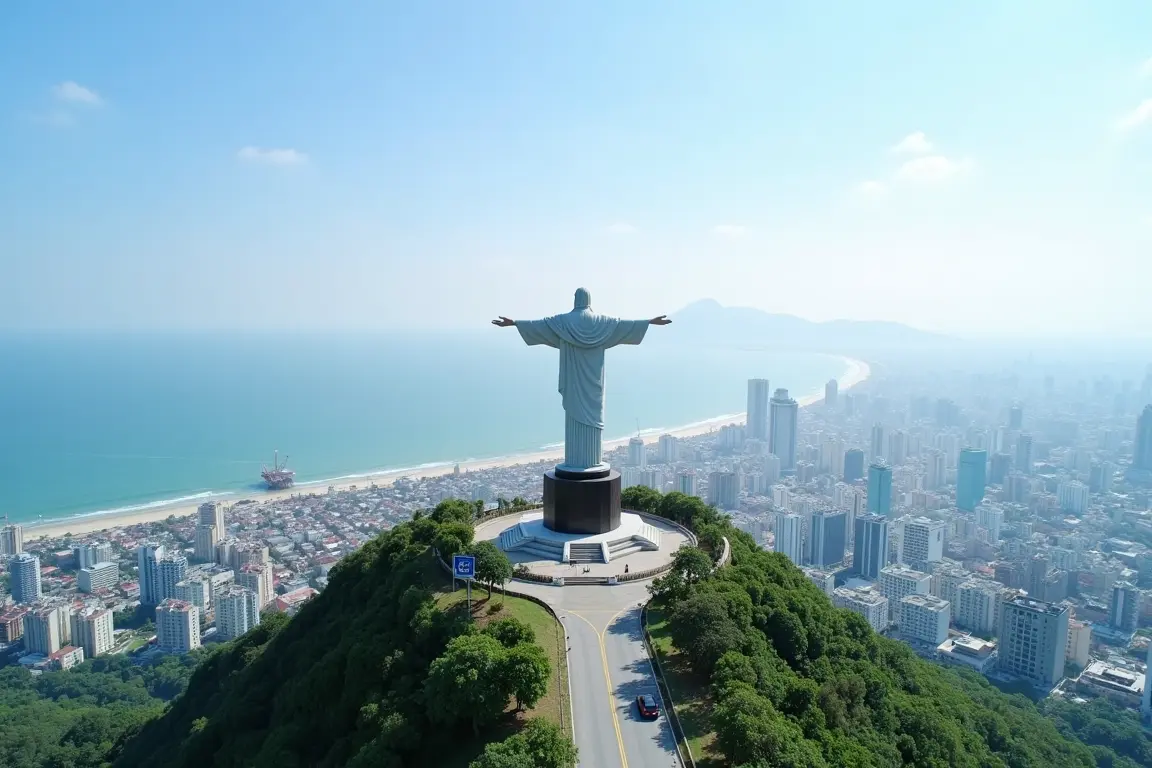
Vung Tau Vietnam possesses a unique dual identity. While widely recognized as a popular beach destination and coastal resort, it is also a critical oil and gas hub for Vietnam’s petroleum industry. This coexistence of tourism and major oil industry defines Vung Tau’s character and economy. The iconic Christ Statue offers panoramic views that encompass both the sprawling city, its beaches, and the offshore oil rigs that dot the South China Sea. Understanding this blend is key to appreciating Vung Tau fully.
EssentialVietNamtravel.com believes this multifaceted nature makes Vung Tau more than just another stop on a Vietnam travel guide; it’s a city with significant economic importance. The Oil Industry causes economic development in Vung Tau, influencing its infrastructure and population. Vung Tau is a city that successfully balances these two vital sectors.
The Economic Significance of Vung Tau’s Oil and Gas Hub
Vung Tau serves as the logistical and operational base for Vietnam’s offshore oil and gas exploration and production. The Petroleum industry is a MajorIndustry in Vung Tau, contributing significantly to the national economy and the prosperity of Ba Ria-Vung Tau Province. PetroVietnam, the state-owned oil and gas company, has a substantial presence here. The city’s strategic cape location and port facilities make it ideal for supporting offshore activities.
Impact of the oil and gas sector:
- Employment: The industry provides numerous jobs, attracting skilled workers and expatriates to Vung Tau.
- Infrastructure Development: The demands of the oil sector have spurred the development of ports, roads, and specialized services. You might notice this industrial aspect.
- Economic Contribution: It’s a major source of revenue and foreign investment for Vietnam.
- Expatriate Community: The presence of international oil companies has led to a notable expatriate community, influencing some local amenities and services. While visitors might not directly interact with oil operations, the industry’s presence is visible in the offshore supply vessels, helicopters, and the general economic vibrancy of the city. EssentialVietNamtravel.com highlights that this industrial backbone provides a stable economic counterpoint to the more seasonal tourism sector. Vung Tau is economically significant due to this.
Balancing Tourism Development with Industrial Importance
Vung Tau has managed to develop its tourism sector alongside its role as an oil hub. The city authorities and businesses strive to ensure that industrial activities do not overly impinge on the appeal of its beaches and recreational tourism offerings. This balance is crucial for sustained growth. Tourism drivers service sector growth in Vung Tau, creating a parallel economy.
Strategies for balancing:
- Zoning: Industrial port activities are generally concentrated in specific areas, away from the main tourist beaches like Back Beach and Front Beach.
- Environmental Regulations: Efforts are made to manage the environmental impact of both industrial and tourism activities, though challenges remain.
- Infrastructure for Both: Investments are made in infrastructure that serves both tourists (e.g., good roads, public spaces) and the industry.
- Diversified Economy: The dual economic pillars provide resilience. If one sector faces a downturn, the other can help stabilize the local economy. The Christ of Vung Tau, looking out over the land and sea, can be seen as a symbol overlooking this balance. Visitors enjoying the coastal resort atmosphere might be unaware of the complex logistics supporting the nearby petroleum industry. EssentialVietNamtravel.com recognizes this successful coexistence as one of Vung Tau’s unique characteristics. The Peninsula with distinct Front and Back beaches remains the primary draw for tourism.
Cultural Insights: Pagodas and Historical Sites Reflecting Vung Tau’s Heritage
Beyond its beaches and industry, Vung Tau has a rich cultural heritage. Several pagodas and historical sites offer glimpses into the city’s past and the Buddhist culture Vietnam. Niet Ban Tinh Xa Pagoda, with its impressive Reclining Buddha and intricate artwork, is a significant spiritual center. Thich Ca Phat Dai (Platform of Shakyamuni Buddha) is another major Buddhist site, featuring a large statue of Buddha on a hillside.
The White Palace (Bach Dinh), built during the Colonial Era for the French Governor-General, showcases European architectural styles and offers historical exhibits. Its location overlooking Front Beach adds to its charm. The city’s historic name, Cap Saint-Jacques, given by French navigators, points to its long history as a known coastal landmark. These sites contribute to the cultural tapestry of Vung Tau.
Exploring these cultural aspects:
- Visit Niet Ban Tinh Xa: Observe the religious practices, admire the architecture, and enjoy the peaceful atmosphere. Remember to dress respectfully.
- Explore Thich Ca Phat Dai: Climb the steps to see the statues and enjoy the views.
- Tour the White Palace: Learn about its history and enjoy the colonial architecture and artifacts. EssentialVietNamtravel.com encourages visitors to explore these sites to gain a deeper understanding of Vung Tau. They offer a contrast to the bustling beaches and the industrial backdrop, showcasing the city’s soul and its place in the history of Southern Vietnam and Asia. This cultural heritage is an integral part of what makes Vung Tau an engaging destination.
Explore More of Southern Vietnam
Now that you’ve discovered Vung Tau, why not explore other fascinating destinations in the region?

